On a Saturday in July, a day before the second anniversary of her son Eric Garner’s death, Gwen Carr was sweating under the heat of the noonday sun as she led a march that wound its way through Downtown Brooklyn before ending at Prospect Park. Two years after her son was held down in a chokehold by NYPD Officer Daniel Pantaleo on a sidewalk in Staten Island, screaming out “I can’t breathe” 11 times before he died, she’s still searching for some measure of justice.
Surrounding her was a group of women who had traveled from as far as Baltimore, Cleveland, and Oakland to be there with her, all mothers whose own sons had been killed by police officers — Wanda Johnson, the mother of Oscar Grant, who had his life cut short on New Year’s Day in 2009 by a bullet to his back; Constance Malcolm, whose 18-year-old son Ramarley Graham was shot and killed in the bathroom of their Bronx apartment in 2012; Kadiatou Diallo, the mother of Amadou Diallo, who in 1999 had 41 bullets fired at him as he reached for his wallet; Samaria Rice, whose 12-year-old son Tamir was gunned down as he played with a toy gun in a Cleveland park; and Iris Baez, the mother of Anthony Baez, who, like Garner, died as he was choked by an NYPD officer, asphyxiating to death on the street outside his childhood home in the Bronx on a winter night in 1994.
Against the backdrop of the recent killings of Alton Sterling in Baton Rouge, Louisiana, and Philando Castile in a suburb of St. Paul, Minnesota, which have rekindled calls for reform and compelled tens of thousands around the country to pour into the streets demanding justice, these women came together to ask that their dead loved ones not be forgotten.
Decked out in buttons listing the dates of their sons’ births and deaths as their “sunrise” and “sunset,” the sons who have become the suns around which their lives now revolve, the mothers chanted as they marched, using “I can’t breathe!” as their rallying cry.
“We’re not going to go away,” said Constance Malcolm, the lilt of her native Jamaica in her voice. Four years after Ramarley’s death, Richard Haste, the officer who killed her son, remains on the force, as does Daniel Pantaleo. “There’s no accountability. Until we have accountability, we’re going to keep having marches and going to funerals.”
Next to Constance, 70-year-old Iris Baez walked slowly, the solidity of her body reminiscent of a prizefighter past their prime, and held an umbrella high to shield herself from the sun. Despite her arthritis and a bad knee, she felt she had to come out on this day.
“That’s how we survive, by giving support and being there.”
“That’s how we survive, by giving support and being there,” said Iris. Time has carved lines from her nose down to her chin, twin canyons that frame a mouth that’s often pursed, as if she’s just swallowed something unappetizing. “I have the same pain that they have. I have the same anger they have.”
In the 1990s, Iris was one of the most well-known faces of that decade’s anti–police brutality movement. The Rev. Al Sharpton, who has known and worked with Iris for decades, still describes her as the “ultimate activist mother.”
After her son Anthony’s death, Iris founded Parents Against Police Brutality with Margarita Rosario, another Puerto Rican woman from the Bronx whose son and nephew were gunned down by NYPD officers three weeks after Iris’s son was killed. Parents Against Police Brutality would become an important leader of the city’s dynamic grassroots police reform movement, and a group that, in the words of Andrew Hsiao, a journalist who wrote for the Village Voice in the late 1990s, kept “direct-action politics alive while helping to make police brutality one of the defining political issues of [the] time.”
More than 20 years later, the work she spearheaded has been largely forgotten by the public and the passage of time has slowed her down, but Iris Baez is continuing to organize with a group of women she simply calls “the mothers,” a group that includes Gwen Carr, Constance Malcolm, Kadiatou Diallo, and numerous others she’s searched out over the years at funerals and rallies, in courtrooms, and at their homes. Part recruiter, part therapist, part prophet, Iris tells them is that justice is possible, or at the very least, a simulacrum of justice. What they really want — for their children to be returned to them — is an impossibility, but killer cops, she tells them, can go to prison.
In New York, against huge odds, Iris and these women are leveraging their power as grieving mothers to demand political reform. Together, working closely with the city’s police reform advocates, they’ve won important victories, just last year leading a campaign that compelled New York Gov. Andrew Cuomo to appoint the state’s attorney general as an independent prosecutor in cases where police officers use deadly force, the first of its kind in the nation.
Now, in the days and weeks following the deaths of Alton Sterling and Philando Castile, they’re mobilizing again, campaigning for the passage of the Right to Know Act — a package of bills that would require officers to, among other things, identify themselves during police encounters — and attending the wake of Delrawn Small, a Brooklyn man who was shot and killed by an off-duty police officer in a road rage incident on the 4th of July, a death that has flown under the national radar.
“Something’s going to happen,” Iris predicted after attending Small’s wake and meeting with his girlfriend and his brother. “It’s a boiling pot that’s happening right now.”
Yet they’ve learned that these moments pass all too quickly. After the initial furor over yet another death calms down, after the stories of their sons’ deaths at the hands of the police become a footnote in our shared history, after the vast majority of those who march and protest trickle away — these women, welded together by circumstance, are the ones who remain, compelling us, as the poet Claudia Rankine has written, to continue not only to mourn with them, but to resist the impulse to forget the names of their children.
“In the beginning, you have a lot of people around you,” Iris said. “But after a while, it calms down, everybody goes back to usual. And that’s when you’re alone.”
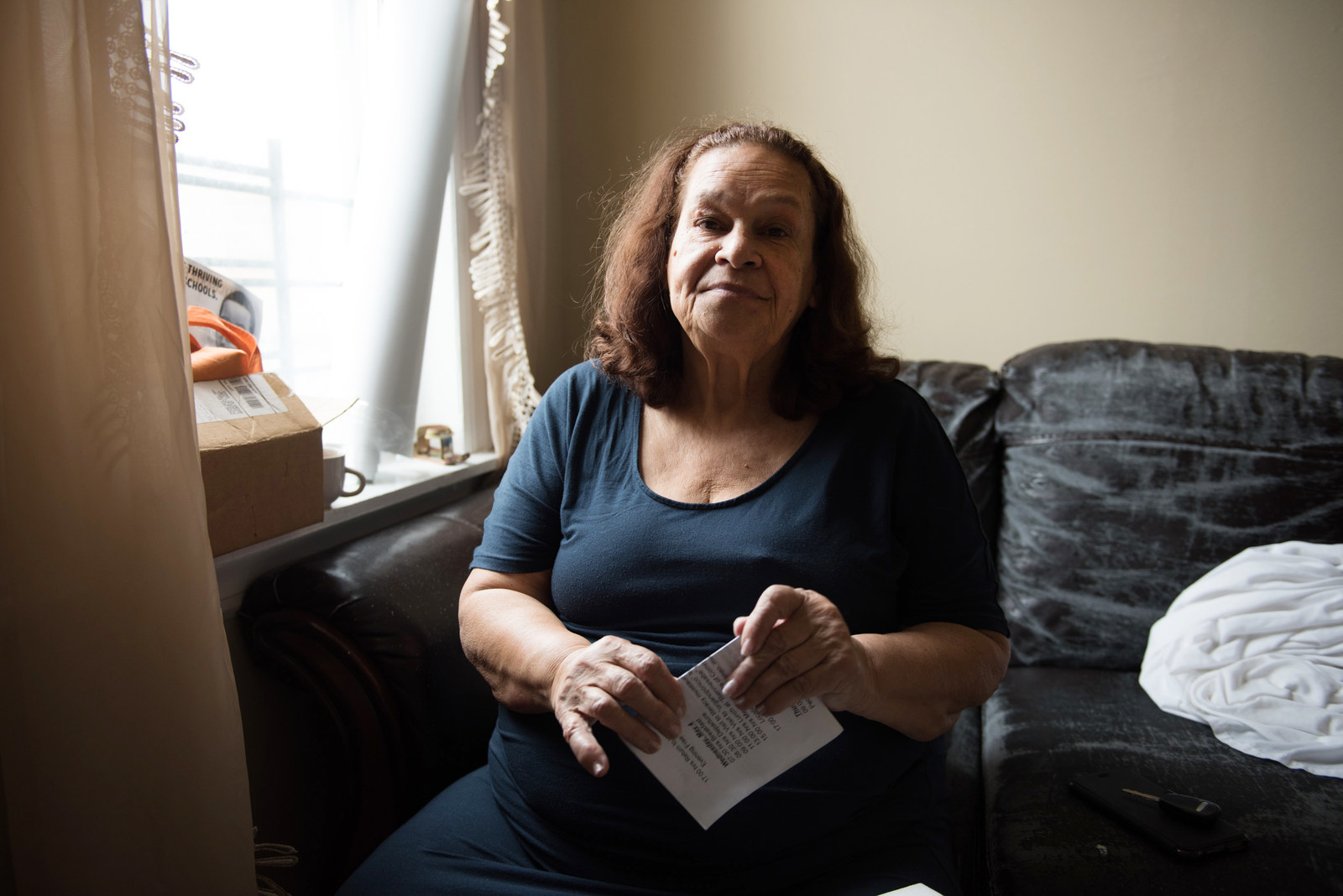
A few weeks earlier, I had gone to see Iris at her home in the Bronx, the same three-story brick building where she raised Anthony and her other children, on a side street nestled next to the bustle of Jerome Avenue.
Born in Ponce, Puerto Rico, Iris moved to New York City with her mother when she was a year old. As a young girl, she had dreamed of a glamorous career as a flight attendant, but her mother took her out of school in the sixth grade to help care for her two younger sisters, and she never went back. Instead, she married Ramon Baez and worked as a teacher’s assistant and home care aide before eventually devoting her life to her family and her church, and, after Anthony’s death, to seeking justice for her son.
In a way, he wasn’t even supposed to be there that evening in 1994 — two years earlier, the Baez family had moved to Orlando, Florida, leaving the neighborhood that Iris had witnessed with increasing alarm turn into, in her words, “a crack haven.”
But Anthony and his three brothers had decided to road-trip back to the neighborhood where they grew up, and on that night, they were tossing a football through the cold December air, the street quiet but for the gleeful shouts of the four brothers, empty of life except for Iris’s sons and a couple of police cruisers idling on the curb.
“I don’t know what happened. I just know that I wanted to find out who killed him, and whoever killed him was going to go to jail. That’s it.”
When an errant pass collided with the police car of Francis X. Livoti, an officer known to have a quick temper and a history of violence (he’d already racked up almost a dozen brutality complaints), he emerged, enraged. Livoti arrested the youngest Baez brother, 16-year-old David, slamming him against a parked car. When Anthony tried to intervene, Livoti and another officer moved to arrest him too, with Livoti’s arm wrapped in a chokehold around Anthony’s neck, squeezing his throat like a vise. By the time more officers arrived on the scene, Anthony was handcuffed on the ground, his face pressed to the concrete and his neck ringed with bruises. He was pronounced dead an hour later.
Thousands of miles away, Iris Baez was at her new home in Orlando, cooking a feast and preparing for her large family to gather for Christmas, when she got a phone call from her former church pastor telling her that something had happened to her son, and that she needed to come back to New York immediately.
“I don’t know what happened. I just know that I wanted to find out who killed him, and whoever killed him was going to go to jail. That’s it,” Iris said, reflecting on the days after Anthony died. We’re sitting in her battered blue minivan, parked in front of her house, and her eyes are fixed straight ahead, her mouth a grim line. “Somebody had to pay for the murder of my son.”
Anthony is everywhere on the block. His face, a small smile dancing around his lips, stares down at me from a time- and weather-worn mural that spans one side of the Baez home, visible through the rusted chain-link fence that separates it from the car repair lot next door.
The street itself, renamed Anthony Baez Place in 2000, is a monument to him, and I wonder if it’s painful for her to be surrounded by reminders of her dead son. “To me, it’s more ‘I’m proud of you. You’re there,’” Iris says of the street signs that bear his name. “My son was going to be big. He could’ve been the president! So it’s fitting for him, a street named after him.”
Her house, which the family bought in 1968, is falling apart. The roof needs to be patched up, she’s behind on her property taxes and her water bill, and the entire building has an air of neglect. She lives with her son David as well as her 13-year-old son Erwin, whom she adopted in 2006 and who’s been recently diagnosed with bipolar disorder. To help take care of the bills and to supplement her monthly Social Security checks, she’s resorted to raffling off copies of Every Mother’s Son, a 2004 documentary by Tami Gold and Kelly Anderson that she was featured in. “Everything needs fixing!” she says as she labors up the narrow staircase to the second floor.
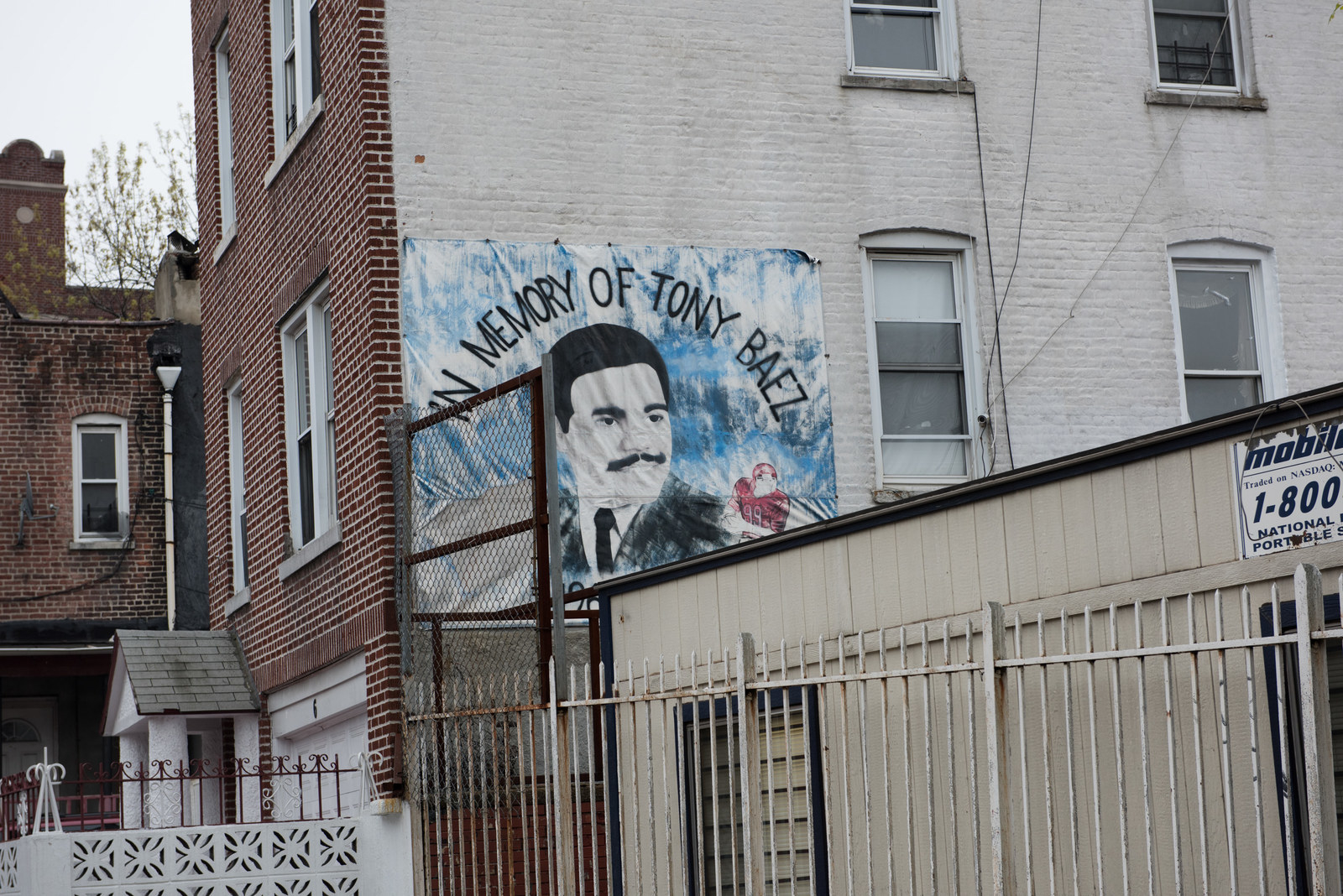
Yet lately, she’s put her personal life on the back burner. In May, she and a group of activists went to Cuba, on the invitation of the country’s federation of women. She then went to Miami for a retreat for mothers of gun violence victims led by Sybrina Fulton, the mother of Trayvon Martin, and then it was off to Martha’s Vineyard for a weekend to take part in a series of events with an artist who has painted larger-than-life portraits of her and other mothers.
In the beginning, years ago, going to places like Martha’s Vineyard, with their wealth and privilege, unnerved her, but now she sees these trips as yet another opportunity to evangelize. “Maybe they haven’t heard the story. The main thing is to get the word out,” she said.
Iris tells me she’s tired, but she’s found the time on this day to meet with Hawa Bah, the mother of Mohamed Bah, a Guinean immigrant who was shot and killed in his Harlem apartment in 2012 after officers responded to a 911 call from Hawa that her son was acting erratically.
She’s come to Iris this morning for advice on how to pressure the Department of Justice to file charges against the officers involved in Mohamed’s death, and they’re talking strategy amid the din of the elevated subway that rumbles by every few minutes and the shrieking of two of Iris’s grandchildren, who are running from room to room playing a game of cops and robbers, one of them clasping a neon green fake gun in his hands.
Iris ignores all of this; her focus is on Hawa, who’s sitting on the worn black leather sofa in the living room. “You have to get on the DOJ, send faxes to him,” Iris counsels her, referring to Preet Bharara, the US attorney for the Southern District of New York.
For Hawa, it’s reassuring to have Iris as a guide. “She knows more than I know. She’s been in this for 21 years,” Hawa says of Iris. “I’m just in this for four years.”
After hearing the news of Bah’s death, Iris showed up at Hawa's door, looking to bring another grieving mother into the fold.
Iris met Hawa shortly after her son Mohamed was killed. After hearing the news of Bah’s death, Iris showed up at Hawa's door, looking to bring another grieving mother into the fold. In the years since, Iris has become her second family, almost closer than her blood relatives, Hawa says. Pain is a thread that unites them.
Hawa is not the only woman Iris is counseling — the previous day, she traveled to New Jersey to meet with Cecilia Diaz, whose son Elvin was shot and killed by Hackensack police officers last May. And the day before that, she made sure to attend a vigil held by Constance Malcolm.
For many of these women, Iris is an inspiration. “This is my support. This is who I stand with. This is who stands with me,” said Gwen Carr of Iris. “Even though her case has been settled, she knows how important this fight is.” Constance, who met Iris in the courthouse on May 15, 2013, the day that Richard Haste walked away a free man, has described her in the past as the woman who keeps her moving.
Hawa has started to cry softly after looking at photos of a friend’s grandchildren on her phone. “When I see a young baby, I remember when I had Mohamed,” she says.
Iris has become used to the tears of grieving mothers over the years. She sits silently and then, after a moment, slowly pushes herself up, grabs a tissue, and wordlessly hands it to Hawa.
Iris still watches the local news every day at 4 p.m. on the television in her bedroom, keeping an eye out for stories about new victims of police shootings. That’s how she heard about Richard Gonzalez, who died while in police custody in March of this year. She went to his family's apartment in the Bronx and slipped a note under Gonzalez’s door with her phone number, and recently, his wife, Hafiza, called her to meet.
She describes her work as her calling, but it can be just as easily read as a form of therapy. “It keeps my sanity, to hear what they go through,” she said of the other women.
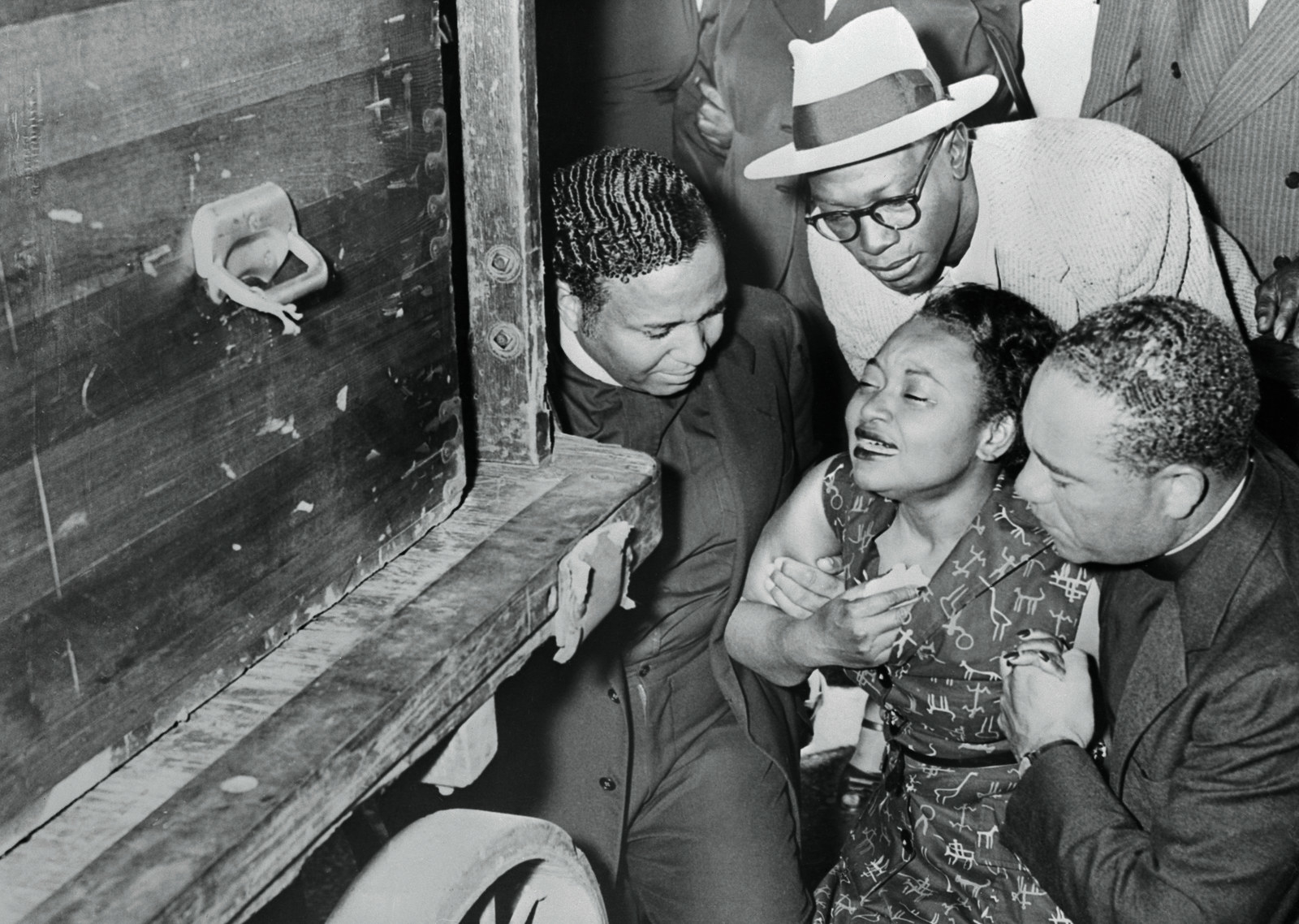
The mother in pain has long been a prophetic voice — in other words, a political figure whose jeremiads help shame a nation into action.
In Argentina, the mothers of the disappeared — men and women who were kidnapped by the military dictatorship by the thousands during the period of the dirty wars in the late ’70s and early ’80s — became a powerful political force, using the tools they had at their disposal: their bodies and their outrage.
Known as “las Madres de Plaza de Mayo,” these women gathered weekly at the public square for which they were named to demand answers about the disappearance of their loved ones, their heads draped with white scarves and their hands clutching photographs of their sons and daughters. “Motherhood,” as Rebecca Solnit has written of these women, “was an emotional and biological tie that the generals then in charge of the country could not portray as merely left-wing or as criminal.”
In the United States, Mothers Against Drunk Driving once made drunk driving one of the leading issues of its time, by relying heavily on the storytelling of the women who made up its core — Candy Lightner repeating how her 13-year-old daughter’s body was thrown 125 feet after being hit by an inebriated man's car; Cindi Lamb sharing how her 5-month-old baby girl was paralyzed from the neck down, her spine crushed, after their vehicle collided with a swerving car.
“We’ve had a history in this country of family members and mothers being able to help Americans understand issues better.”
And decades before, there was Mamie Till-Mobley, the spiritual foremother to Iris and all of these women today, who declared of her son’s mutilated 14-year-old body, destroyed by the fury of two white men on a Mississippi summer night in 1955, “Let the world see what I’ve seen.”
All of these women were transformed by their grief, and their willingness to plumb their pain under the glare of the public spotlight made them symbols, yes, but also political figures, with a moral stature that few could match.
“Having family members, having mothers that can talk about what their loved ones have meant to them” moves the issue of police brutality beyond statistics, said Rashad Robinson, the executive director of Color of Change, a national online civil rights organization that has worked with Constance Malcolm as well as Samaria Rice. “We’ve had a history in this country of family members and mothers being able to help Americans understand issues better,” Robinson said. “I think about the role that Judy Shepard [the mother of Matthew Shepard] played in helping to pass hate-crimes protections for gays and lesbians. These mothers can tell stories and give us a perspective that makes people, even oftentimes some of the most cynical of political folks, sit up and listen.”
How can you turn away from a mother in pain? In her autobiography, Till-Mobley wrote that she recognized the power of becoming a symbol: “I was a grieving mother. That was a universal theme that the media could present, and the public could understand during the trial of my son’s murderers. Motherhood, children, would come to symbolize so many aspects of the movement that was growing out of our suffering. Children and the mothers of children would be there. They would be there on the line, marching.”
It’s an uncomfortable truth that we have treated these mothers (black, Latino, immigrant, working-class) as peripheral until tragedy elevates them to the center of our national conversation on policing and puts a spotlight on their private pain. In a sign of the mothers' growing prominence, Hillary Clinton and Beyoncé Knowles have deployed the images and voices of these grieving women and lifted up their stories, the Clinton campaign relying on them to shore up support among black voters, and Knowles featuring three of them — Sybrina Fulton, Lezley McSpadden, and Gwen Carr — as an emotional gut-punch in her visual album Lemonade.
Many of these women have made the choice, much like Till-Mobley, to demand that we join them in their public mourning, starting foundations in their children’s honor and using their platform to call for legislative change.
They are, even if they don’t know it, continuing the work that Iris and others began in the 1990s, building off the groundwork laid by Parents Against Police Brutality. Coupled with the propulsive force of the Black Lives Matter movement, they have created an opening for reform. Not content to merely be symbols, they’re determined, as Gwen Carr often puts it, to turn their sorrow into strategy. If no concrete policy change occurs, then the deaths of their children have been in vain. And that is a reality none of them can accept.
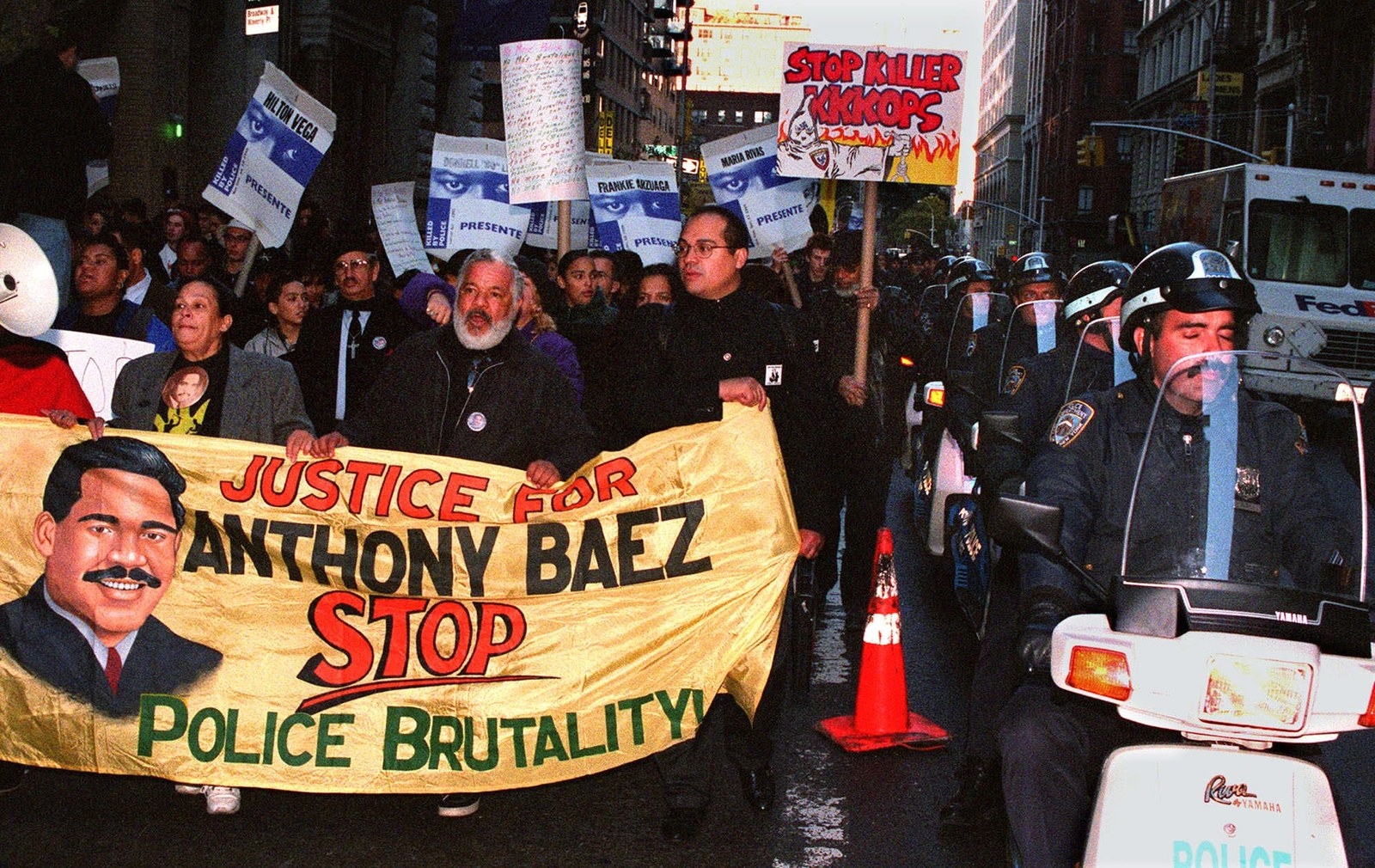
It wasn’t a foregone conclusion that Francis X. Livoti would face any repercussions, let alone face prison time, over the death of Anthony Baez. According to Lou Matarazzo, the head of the Patrolmen’s Benevolent Association, the city’s influential police union, Livoti was just “doing his job”; Matarazzo described Anthony dismissively as a “5-foot-6, woefully out of shape, 270-pound asthmatic who happened to die when [Livoti] wrestled him to the ground.” The last time a police officer had been convicted of homicide while on the job was in 1977, when Officer Thomas Ryan was found guilty in the beating death of 25-year-old Israel Rodriguez.
To put Livoti in prison, Iris had to transform herself from a woman who had never even been to a rally to an activist willing to occupy office buildings and lead raucous protests.
Susan Karten, an attorney for the Baez family, remembers the first time she met Iris, a few days after Anthony was killed. She was “a housewife," Karten said, who then "did a 180-degree turnaround.”
“I represent a lot of people who’ve lost children, and it can go a lot of different ways,” Karten says. “But with Iris, she just went full-fledged into this.”
“I grew up watching Martin Luther King on TV, so I knew that I was going to have to take that kind of action.”
It was at a rally on Martin Luther King Jr. Day in 1995 that Iris met Margarita Rosario. Margarita was just wailing and wailing — a “screaming woman,” according to Iris. They didn’t know each other, but they recognized each other’s grief.
“That’s when it hit me, like, oh my god, this is really happening,” Iris said of meeting Margarita. The problem, she realized, was bigger than just her son, and a few months later, the two would birth Parents Against Police Brutality. “I grew up watching Martin Luther King on TV, so I knew that I was going to have to take that kind of action,” Margarita recalled. She asked a longtime organizer what she needed to do to get justice for her son, and he told her that she had to make her son’s name a household name. “And I said, 'How do you do that?' And he said, 'Speak everywhere, wherever you get invited, you go and talk about your son.'”
Iris took those words to heart. She started a foundation in her son’s name and turned the basement of her home into a command center. She ordered thousands of business cards and began pounding the pavement, passing out fliers and meeting with anyone who could help her, from the city’s established black and Latino leaders to street gangs like the Latin Kings and organizers and activists from far-left groups like the Revolutionary Communist Party, always with a large button — the size of a small dinner plate — of her son’s face pinned to her chest. As she met more women and more families whose loved ones had been killed by police, her mission broadened, to get justice not only for her son, but for the children of other women like her.
By the time Livoti went on trial in the summer of 1998 (he had been acquitted in a criminal trial in 1996, and the DOJ had filed civil rights charges against Livoti shortly after), Iris and Margarita had built not only a local movement of families, but a national one, launching the Stolen Lives Project in 1996 and traveling the country teaching families how to push for accountability. In an interview from 1997, Iris described her work in this way: “Maybe me going out in the street, me hollering and carrying on is to help other people to the light, to bring them to the light that we have a big problem in this city.” Dozens had joined Parents Against Police Brutality, and families from all corners of the United States had begun mailing her photos of their dead children and the stories of how they died, and asking for her help.
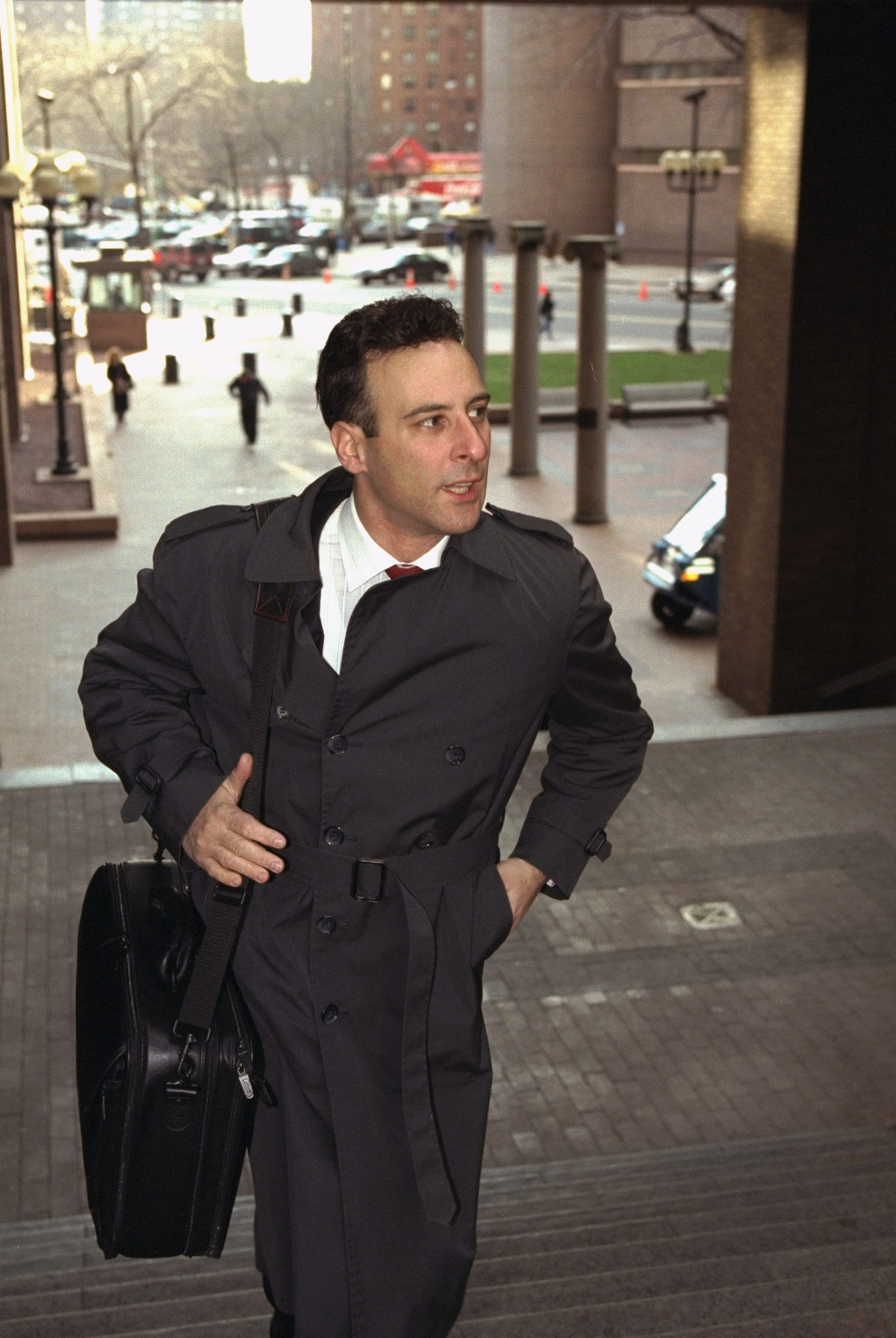
In June 1998, federal Judge Shira A. Scheindlin found that Francis X. Livoti had violated the civil rights of Anthony Baez; Livoti would go on to serve his full seven-and-a-half-year sentence in federal prison.
Getting to that day had taken almost four years of rallies and protests (at one point, Iris, Margarita, and a handful of others had even occupied the Office of the Bronx District Attorney, refusing to leave until he met their demands) and had required the will to confront the NYPD, whose commissioner, William Bratton, had, at one particularly heated town hall meeting, called Parents Against Police Brutality “a bunch of fools.”
It should have felt like a victory, and a rare one. A recent Pittsburgh Tribune-Review analysis found that in the 21-year period between 1995 and 2016, the DOJ rejected 96% of all complaints brought against law enforcement officials, and since Livoti, no other NYPD officer has had federal civil rights charges filed against them for the killing of a civilian.
But for Iris, it was a bitter, partial one, and still is today. “We never got justice. Because he went to jail for violating [Anthony’s] rights, but he didn’t go to jail for murdering my son. So I can’t stop. Because he never went to jail for murdering my son!” Iris said emphatically. “That’s why I have to keep it alive. I have to keep it in the newspaper.”
What would justice feel like? “When they get justice, I get justice,” Iris said, referring to the mothers, women like Gwen Carr, Hawa Bah, and Constance Malcolm.
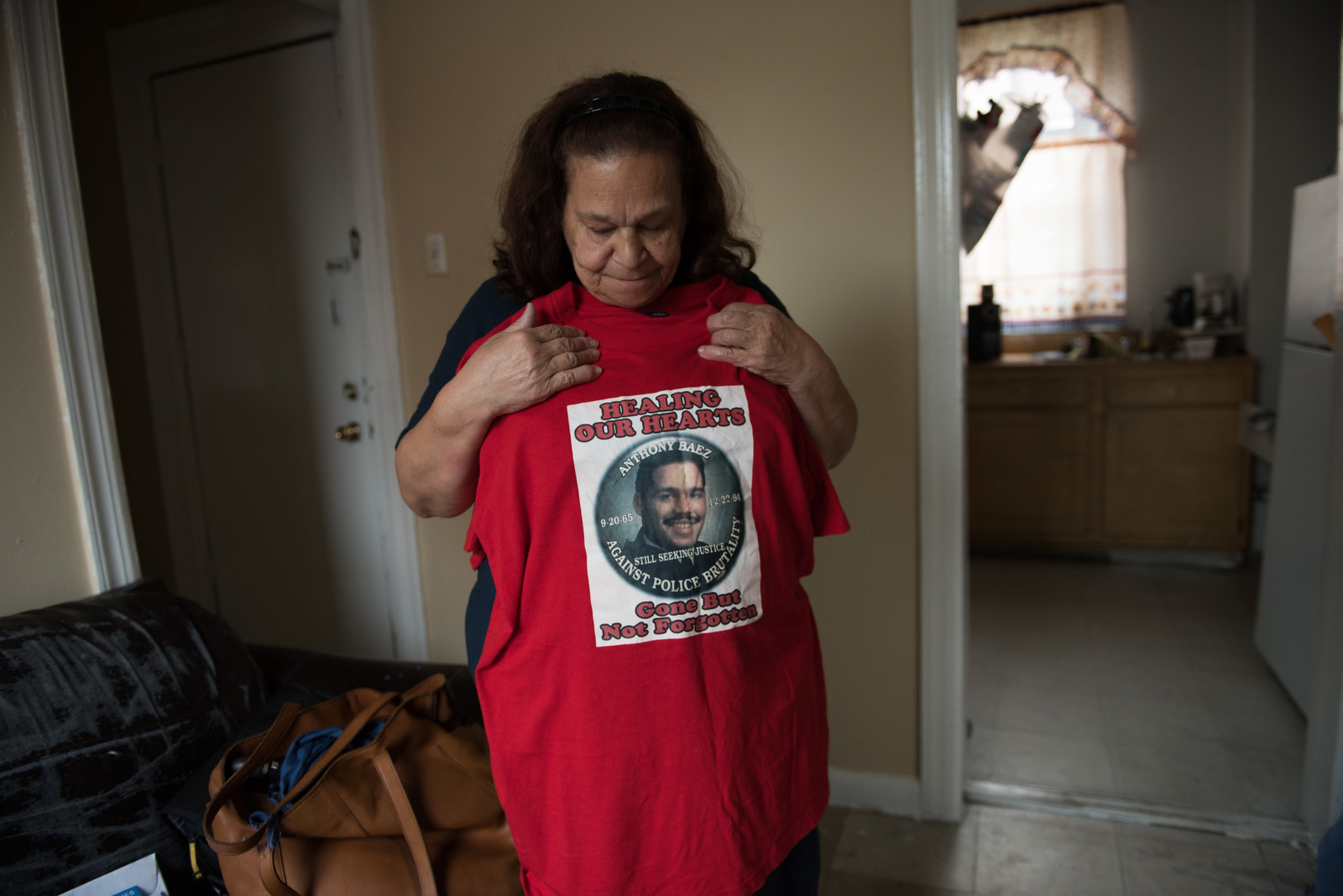
I met up with Constance Malcolm on the fourth anniversary of Ramarley’s death, on a February day earlier this year. Her son was killed by NYPD Officer Richard Haste three weeks before George Zimmerman gunned down Trayvon Martin in Florida, spawning the birth of the hashtag #BlackLivesMatter, and six months before Michael Brown would be killed in Ferguson, Missouri.
Constance still lived in the apartment where her son was killed, as do her youngest son Chinnor and her mother, Patricia Hartley. Her home was cluttered with markers of her new life — in her bedroom, there was a bullhorn stacked on top of neat towers of her shoes, as well as the large speakers she uses for rallies. Protest signs were propped against the wall of her living room. There’s little trace of Ramarley, beyond a framed photo of him with Chinnor and a stack of his clothes, still neatly folded in his grandmother Patricia’s bedroom, where Constance has left them untouched for the past four years. She’s also kept, for reasons she can’t explain, the blood-stained bath mat from her son’s deadly encounter with Richard Haste.
The previous month, Constance and advocates from the citywide coalition Communities United for Police Reform had kicked off a series of weekly actions, which would culminate on the day of the anniversary with a press conference on the steps of City Hall, and then a vigil later that evening in front of the DOJ’s lower Manhattan headquarters, where she and a handful of activists planned to sleep overnight in an effort to pressure the DOJ to file charges against Haste. The gray sky promised the rain that the weather forecast had predicted, but that didn’t shift her plans.
In her apartment, she got ready for the day ahead, putting on her makeup with the precision of a soldier preparing for battle and pulling together everything she needed into a Zara bag, including the scrubs she would wear to work the next morning. Despite how packed her schedule is, Constance had recently taken on another job in addition to her work as a certified nursing assistant at a nursing home in Ossining, New York. “I need to stay busy,” she said.
Her phone rang constantly — a reporter from News 12 Bronx, wanting to confirm the details of the morning press conference, a call from Frank Graham, Ramarley’s father, about the overnight vigil taking place later that evening, followed by an organizer who called to check in and see when she was going to be down at City Hall. “Right now, it's very stressful for me, dealing with what I'm dealing with, still fighting,” she said. She hadn’t been sleeping well, either.

In her SUV, driving downtown to City Hall, Constance began talking about the work she and the other mothers are engaged in.
“It’s amazing to see so many family members become leaders,” Constance said. She rattled off a list of others who had been killed by police officers in different cities and states around country, the names rolling off her tongue. “They want you to just lay back and just forget about what happened. And they don’t understand, people are rising up, people are getting together, and they want to see changes.”
Accountability was on her mind. Four years later, not only had Richard Haste escaped a criminal trial, he was still on the force.
How to hold police officers accountable when they kill the people they’re charged with protecting? This question was at the heart of the campaign — led by families of victims, including Constance, Iris, and Gwen Carr — that forced New York State Gov. Andrew Cuomo to sign an executive order in July 2015 authorizing the state’s attorney general to investigate cases in which police officers use deadly force, and, if warranted, bring officers to trial. On that day, New York became the first state in the country with a special prosecutor charged with prosecuting police killings independently of local district attorneys. While outcry over the lack of indictments of the officers who killed Laquan McDonald in Chicago and Tamir Rice in Cleveland played a large role in the ousters of the district attorneys who prosecuted those cases, and while special prosecutors are often appointed to look into individual instances of police brutality, no other state since has created a similar position.
Nationally, the vast majority of officers involved in police killings are rarely indicted, and convictions of any kind are even rarer; this holds true in New York City, where a 2014 Daily News study found that out of 179 deaths involving on-duty NYPD officers since 1999, only three of the officers were brought up on criminal charges, resulting in only one conviction.
After the announcement on Dec. 3, 2014, that a Staten Island grand jury had declined to indict NYPD Officer Daniel Pantaleo for the death of Eric Garner, New York was engulfed in what seemed like rolling, continuous protests throughout the city — sparked by the non-indictment of Pantaleo but also by the news that Darren Wilson wouldn’t go to trial for the death of Michael Brown, as well as the killing of Akai Gurley, who was shot in the stairwell of a public housing complex in East New York by Officer Peter Liang at the end of November — its streets flooded with a seemingly endless stream of bodies chanting “This stops today” as well as “I can’t breathe.”
Sharply criticizing the Staten Island district attorney, a range of elected officials including New York State Attorney General Eric Schneiderman began clamoring for a special prosecutor, and the New York Times editorial board jumped into the fray, writing that “[p]reserving the status quo is no longer an option.”
Nationally, the vast majority of officers involved in police killings are rarely indicted, and convictions of any kind are even rarer.
Iris was watching all of this activity closely, as were many of the city’s police reform advocates. In 2000, Iris and Kadiatou Diallo had worked together to champion a package of police reforms that included a special prosecutor provision, but it went nowhere after 9/11 generated intense sympathy and support for the NYPD, and similar bills in later years died each time in the state Senate. “Most people thought [the special prosecutor] wasn’t going to happen, but if it was going to happen, it was going to happen now,” said Yul-san Liem of the Justice Committee, a group that works with families of victims. Liem called Iris one evening and asked her if she wanted to revive the campaign that she and Kadiatou had led more than a decade ago. She said yes, as did Gwen Carr, Hawa Bah, Constance Malcolm, and 14 other families whose loved ones had been killed by police officers.
If the protests that were roiling New York City created the opportunity, it was these mothers who pushed it through, leading a campaign that relied on their stories of being let down by district attorneys who they felt had only halfheartedly called for the indictment of the officers who killed their sons. They told the stories of how their children had died over and over again, to news outlets, to elected officials, and to Gov. Cuomo himself, holding rallies and press conferences at the state capitol and in front of his office. “They were the ones that made the compelling argument that the government couldn’t turn down,” said Rev. Al Sharpton — a truth seemingly echoed by the fact that in Cuomo’s speech on the day he signed the order, flanked by Constance Malcolm to his left and with Iris and the mothers who had held his feet to the fire watching from the audience, he repeatedly referenced the women and their organizing as critical to his decision, calling Constance in particular a “spirited,” “opinionated,” and “informed" woman.
As we drove downtown to mark the fourth anniversary of Ramarley’s death, I asked Constance why, despite the fact that the executive order would do little for her, she had pursued it with a zeal that suggested otherwise. Their goal, she said, was to spare other families the pain they have experienced in seeing their sons' killers walk free.
“What people don’t understand, or what I want people to understand, is that we’re doing this work, it’s not for our kids anymore. My son is dead. We do it for changes so another mother won’t have to feel the pain that we’re going through,” Constance told me. “It wasn't for our sons. It was for the future.”
Her thoughts then turned to the upcoming day and the vigil for her son. “I hope a thousand people show up,” she said.
The turnout would be much less than that. One month later, Constance and Frank, Ramarley’s father, were told the news: The DOJ would not be pursuing federal charges against the man who killed their son. Richard Haste would never face prison time for killing Ramarley. This news wasn’t greeted with the rioting in the streets that some local elected officials had predicted. Beyond a core of dedicated activists and anti–police violence organizations, the general public had moved on.
Yet Constance, just a few weeks later, threw herself back into the work, speaking at events and going to rallies held by other families. Much like Iris two decades before her, Constance has embraced her role.
“This is how I give back to other new mothers. I call it this boat that no one wants to be in,” said Constance. “A lot of times, mothers get thrust in this. We didn't ask for this. [But] we become this tiger, we come out swinging.”
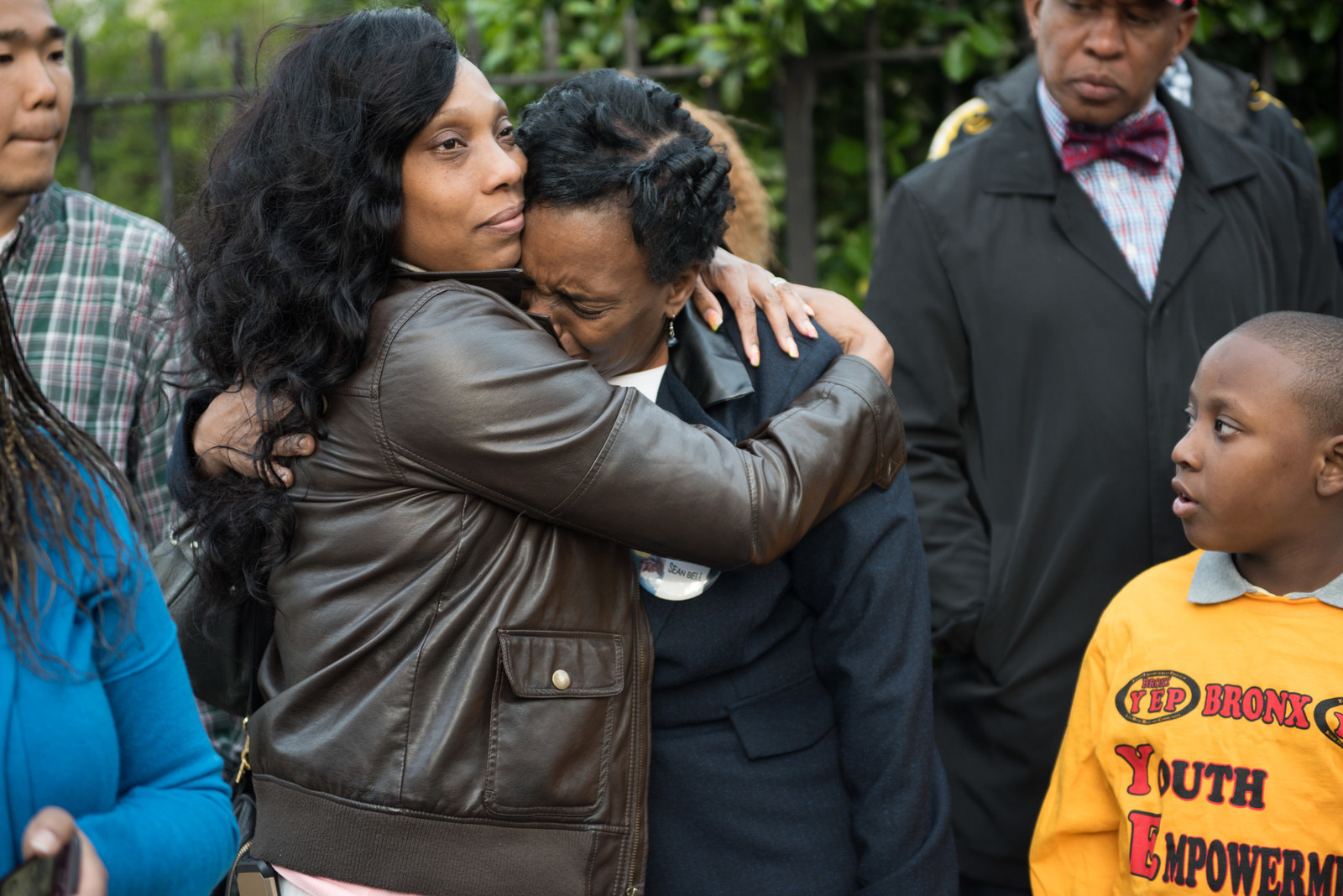
We are drawn to grieving mothers. (Perhaps it’s something innate, a sort of biological imperative.) For many of them, their ability to channel their grief and their anger into public protest feels like a form of survival.
What often goes unacknowledged is the toll that the death of their loved ones and the organizing work has had on these women and their families. The Baez family fractured after Anthony’s death, a fissure that has only widened over time. Iris blames herself, and the fact that for years, she spent more time pursuing justice for her dead son than with the living. “When they kill somebody in your family, they kill the whole family,” Iris said. Anthony, she recalls, was the one who made holidays special, the son who would dress up as Santa Claus every Christmas. With him gone, she said, “there’s no Christmas, there’s no Thanksgiving.”
Constance’s mother refuses to talk about that night or Ramarley’s death, traumatized by the events of four years ago. Gwen Carr and her granddaughter Erica Garner are no longer speaking, riven by ideological differences (Erica was a Bernie Sanders supporter, while Gwen has campaigned for Hillary Clinton). And Margarita Rosario and her husband are separated, their son’s death the wedge that forced them farther apart, and while she visits her son’s grave regularly, her other sons refuse to join her. The monetary settlements they have all won from the city — which range from the $1.1 million awarded to Margarita’s family up to $5.9 million for Eric Garner’s family, the bulk of which went to his wife, Esaw — have also led to internal tensions, and some, like Iris, are still struggling financially. Today, Gwen Carr and Hawa Bah are both still waiting to hear whether the Department of Justice will file federal charges against the officers who killed their sons, and Constance’s options for any sort of accountability have become increasingly limited, her only recourse now to demand that Mayor Bill de Blasio and the NYPD fire Richard Haste.
According to Iris, many families make the choice to fade away from the spotlight. “It’s the repeat, repeat, repeat,” she said. “You get tired after a while.”
“A lot of people feel that we're not gonna get nothing. Nothing's gonna change. But I've seen the change.”
Iris, for one, could have stopped when Livoti went to federal prison. She could have gone back to her previous life, comforted by the knowledge that the man who killed her son was paying for his actions. But she didn’t, or, perhaps more accurately, couldn’t.
The filmmaker Tami Gold, who grew close to Iris after including her in the documentary Every Mother’s Son, has a theory of what compels her. “I think that being in the struggle for so long, that she gets a lot from it,” Gold said. “I think she receives an enormous amount of validation.”
Despite the victories Iris has been part of — the special prosecutor campaign, sending Livoti to prison — she’s not planning on stopping, frustrated by the ebb and flow of outrage. “When they killed Diallo, people rised up. When they molested [Abner] Louima, the people rised up. But then they go back to their normal selves. And that’s what I don’t understand,” she said. Her voice got indignant, rising to a new register. “I say no. I can’t live like that,” she said. “I don’t know why. I can’t accept it. I want to accept it, but I can’t.”
“People are tired, that's what I think. A lot of people feel that we're not gonna get nothing. Nothing's gonna change,” she continued. “But I've seen the change.”
We were in the basement of her house, and her son Erwin was sprawled on a couch playing a video game. The only decoration in the room, other than tacked-up photos of her family, was her mantel, which dominated a wall and was crowded with framed photographs not only of her son Anthony, but of the sons of the mothers and parents of the movement: Amadou Diallo, Kimani Gray, Trayvon Martin, Mohamed Bah, Nicholas Heyward Jr., Oscar Grant, Ramarley Graham.
I asked her about them, and she told me that she had taken the photos from a rally last year, where they had been displayed on the ground as a makeshift altar. Once the rally ended, everyone left, leaving them on the ground. It was raining, she remembered, and she felt she couldn’t just leave them there. “I grabbed my son, I grabbed Diallo. Then I said, I know this one. And this one and this one and this one,” she said of the portraits. “There were a lot more, but I couldn’t carry them.” •
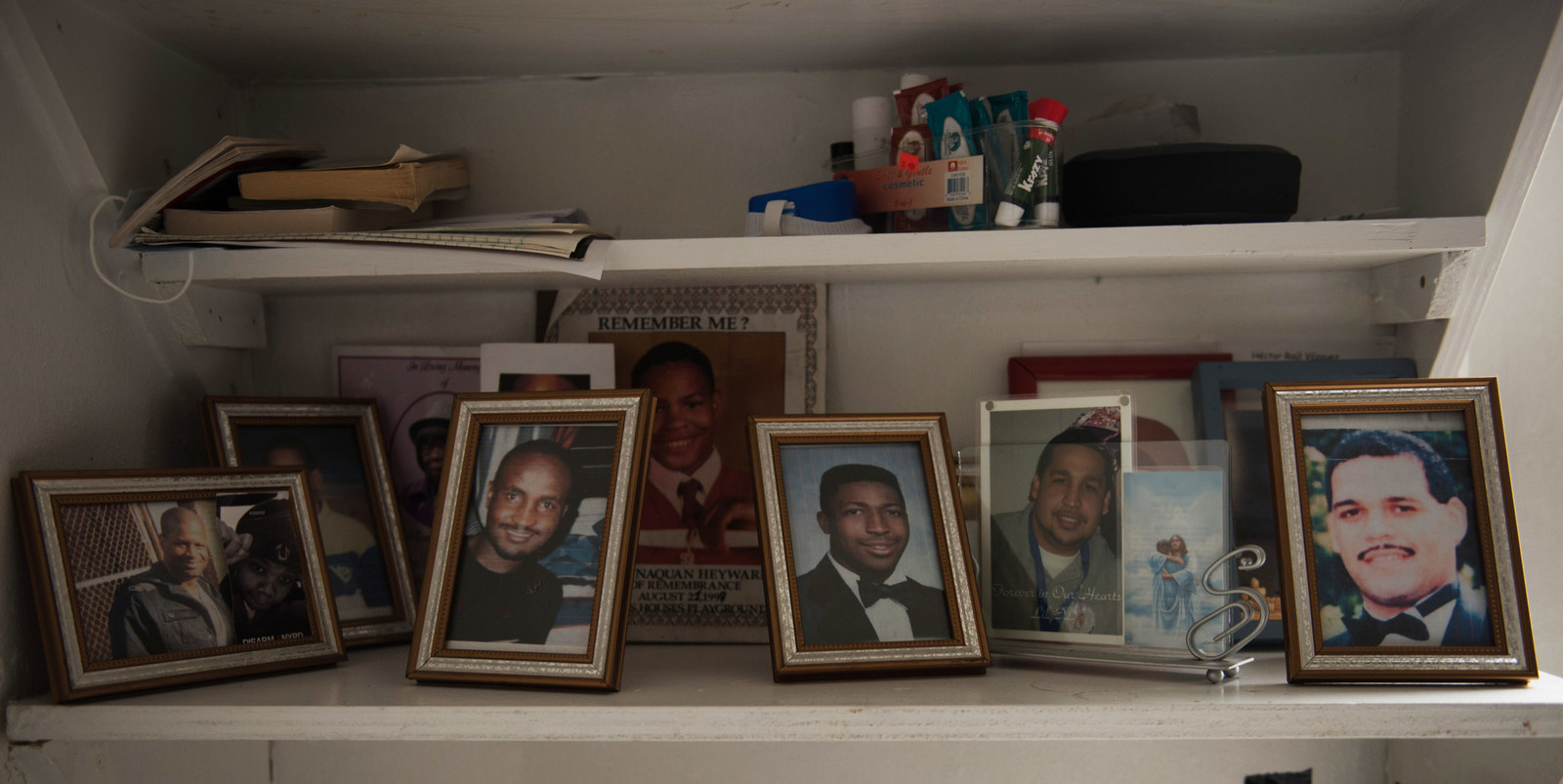
Esther Wang is a freelance writer based in New York City. In 2016, she was a BuzzFeed Emerging Writers Fellow, and in 2013, she was an Open City Fellow at the Asian American Writers' Workshop.
